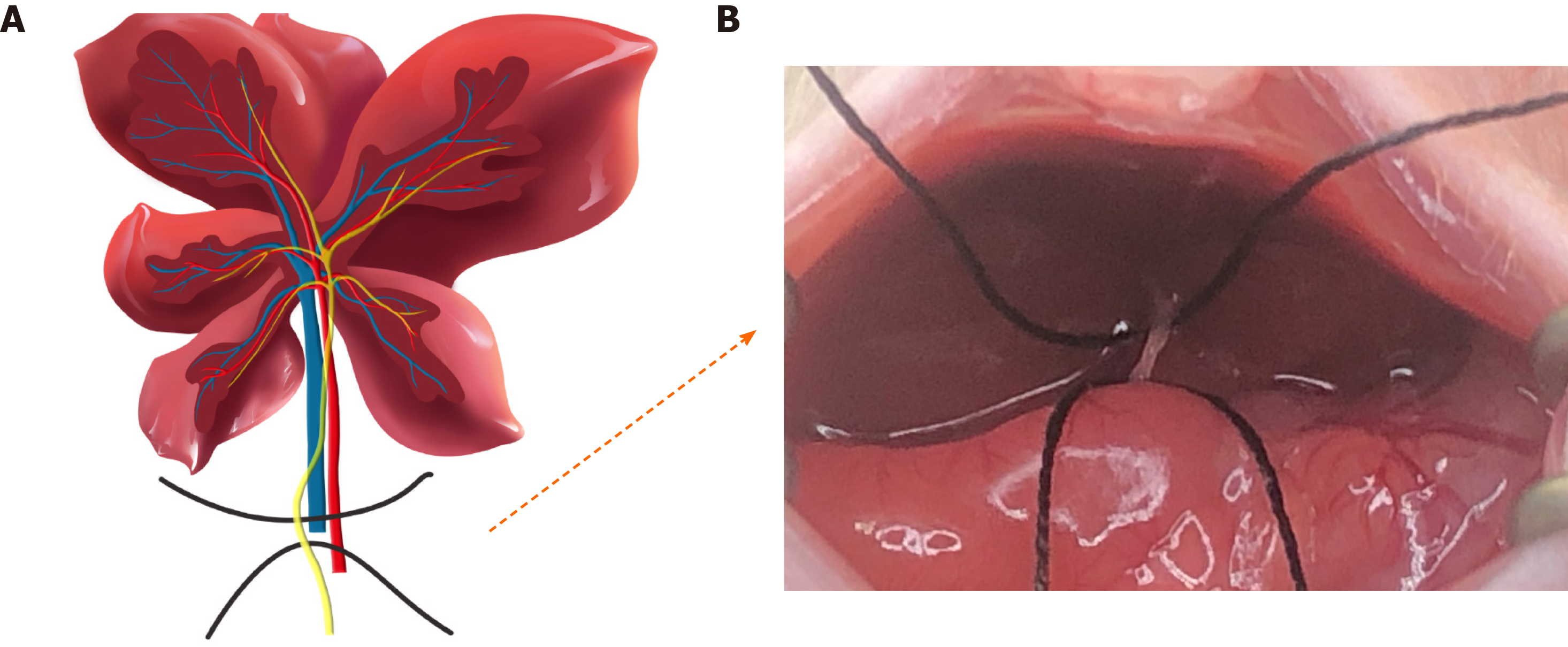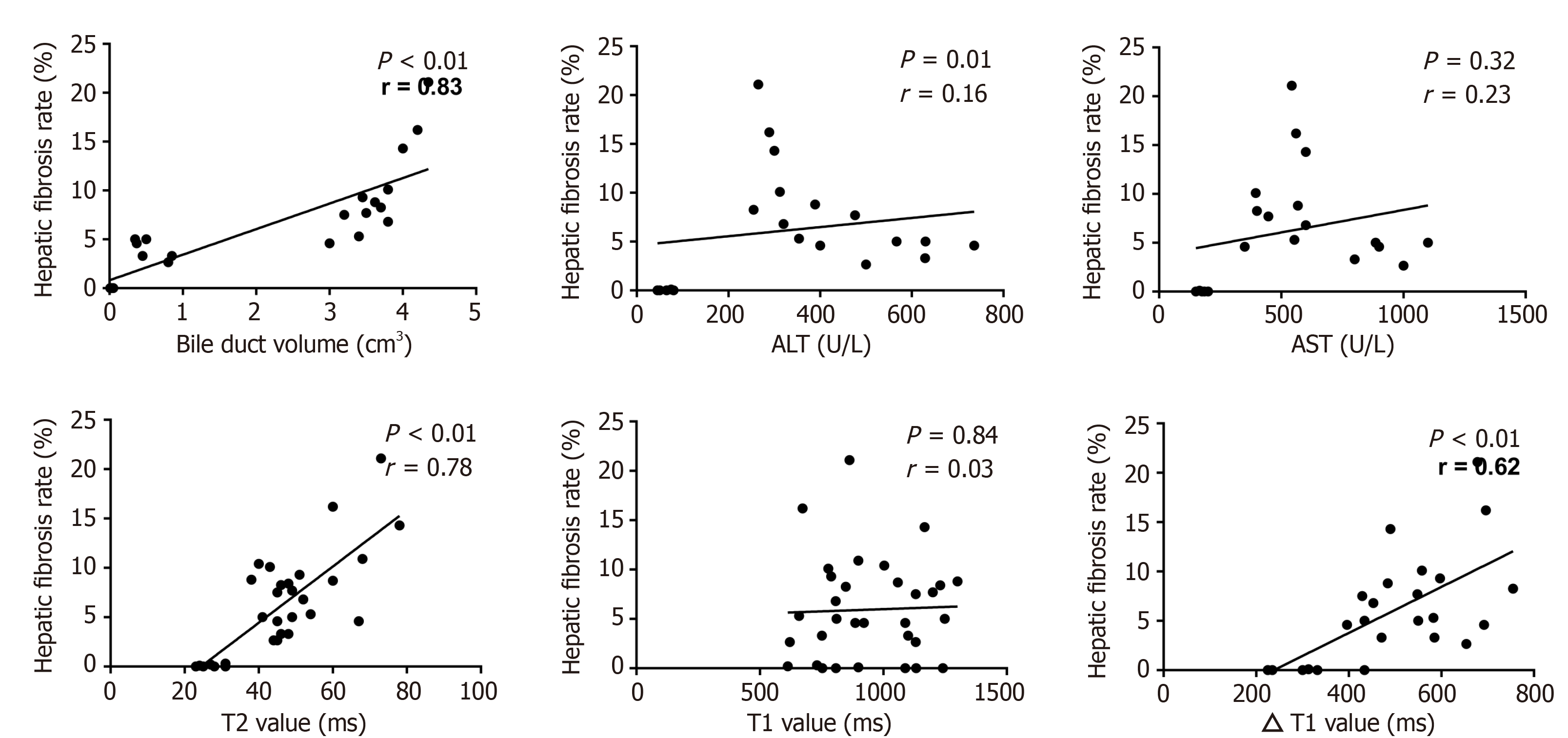Copyright
©The Author(s) 2021.
World J Gastroenterol. Dec 21, 2021; 27(47): 8156-8165
Published online Dec 21, 2021. doi: 10.3748/wjg.v27.i47.8156
Published online Dec 21, 2021. doi: 10.3748/wjg.v27.i47.8156
Figure 1 Schematic diagram of bile duct ligation.
A: Anatomy of the liver, bile duct, portal vein, and hepatic artery in mice; B: Exposure of the bile duct.
Figure 2 Magnetic resonance imaging findings and quantitative analysis.
A: Box diagram of bile duct volume, ALT and AST in sham and BDL subgroups; B: Maximum cross-section of the bile duct or gallbladder on MRCP, T1-weighted, and T2-weighted images in sham and BDL subgroups. BDL: Bile duct ligation; MRCP: Magnetic resonance cholangiopancreatography; ALT: Alanine aminotransferase; AST: Aspartate transaminase. aP < 0.01 for comparison between and sham and liver fibrosis subgroups.
Figure 3 Functional parameter changes of magnetic resonance imaging and quantitative analysis.
A: Maximum cross-section of liver parenchyma on T2 mapping, pre-, and post-enhanced T1 mapping in sham and BDL subgroups; B: Box diagram of T2 value, T1 value, and ΔT1 value in sham and BDL subgroups. BDL: Bile duct ligation. aP < 0.01 for comparison between and sham and liver fibrosis subgroups.
Figure 4 Masson's trichrome stain of the intrahepatic bile duct and hepatic parenchyma in sham and bile duct ligation subgroups (light microscopy, 400×).
BDL: Bile duct ligation.
Figure 5 Spearman correlation coefficients between magnetic resonance imaging parameters with hepatic fibrosis rate.
ALT: Alanine aminotransferase; AST: Aspartate transaminase.
- Citation: Liu JY, Ding ZY, Zhou ZY, Dai SZ, Zhang J, Li H, Du Q, Cai YY, Shang QL, Luo YH, Xiao EH. Multiparameter magnetic resonance imaging of liver fibrosis in a bile duct ligation mouse model. World J Gastroenterol 2021; 27(47): 8156-8165
- URL: https://www.wjgnet.com/1007-9327/full/v27/i47/8156.htm
- DOI: https://dx.doi.org/10.3748/wjg.v27.i47.8156













